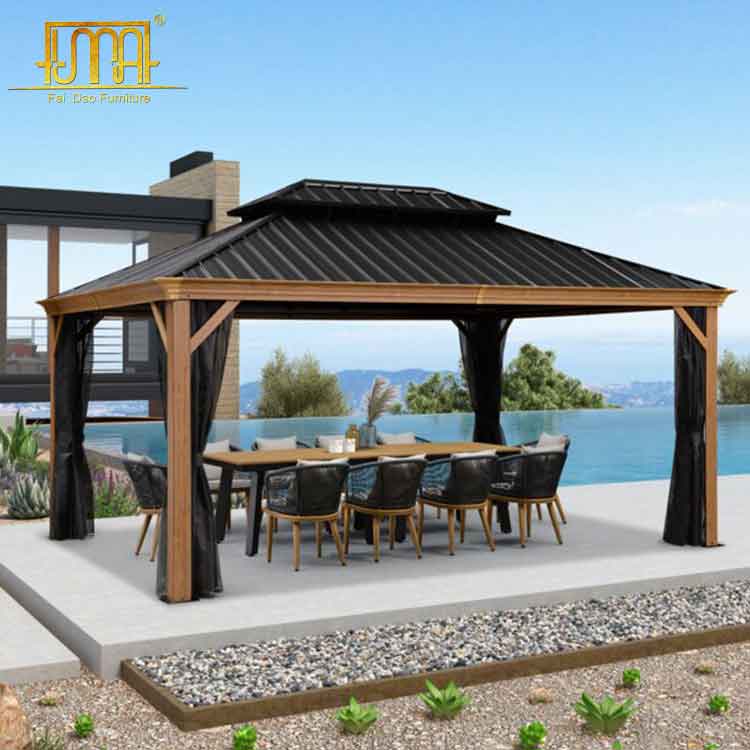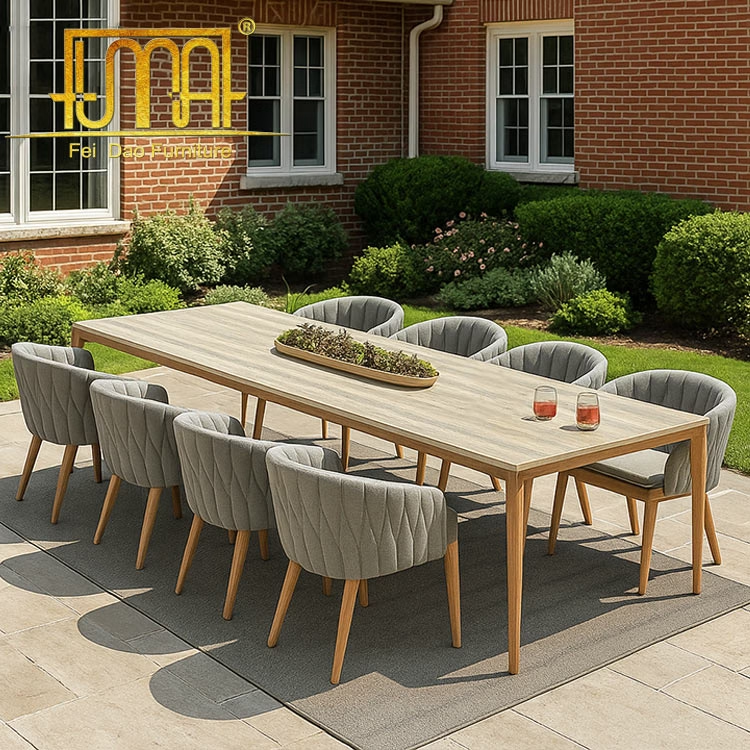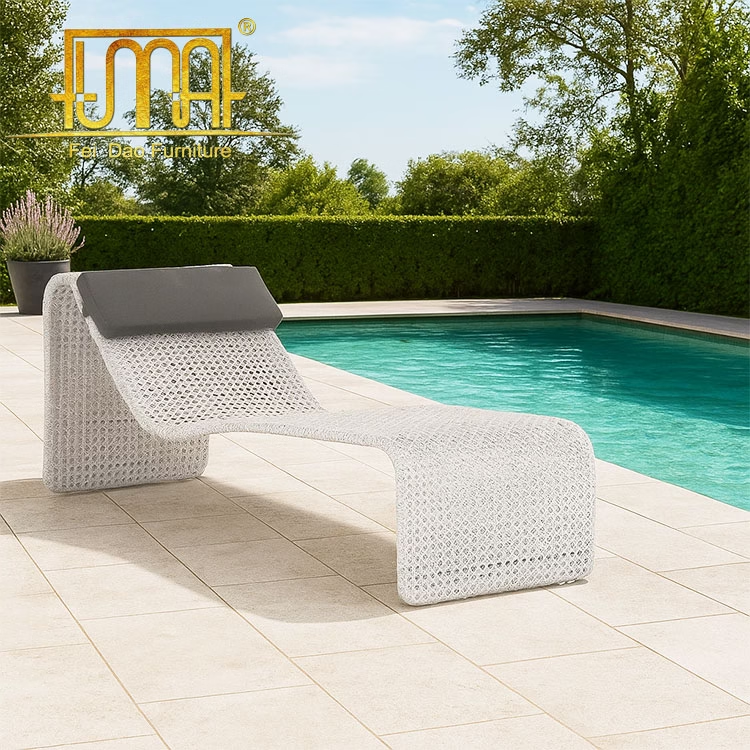Adding a Pergola: What You Should Know
Learn about design choices, material options and other considerations for adding a pergola or shade structure
A pergola is remarkably versatile. The material it is made of and where you place it in your garden can turn it from a functional but basic structure into a one-of-a-kind statement piece. Extras can range from lights, ceiling fans and adjustable overhead slats to entertainment systems, fire features and outdoor kitchens.
A pergola covered with plants, both on the exterior and hanging inside, is the very definition of a garden room. For avid gardeners, this makes a pergola the perfect spot to show off spectacular climbing or vining plants — anything from ivy and wisteria to roses and clematis. You could even add some edibles, such as tomatoes or grapes.

Here’s what to know about adding a pergola to your yard — including ideas for the design and location, the pros and cons of different materials, and whom to hire.
What Is a Pergola?
A classic pergola’s design is deceptively simple. It consists of four posts, which in turn support four crossbeams or a mix of beams and rafters around the top perimeter of the structure. A slatted or lattice roof provides filtered shade.
A pergola has the look of an arbor and, like an arbor, is traditionally covered with climbing or vining plants. The primary difference between the two structures is size. Pergolas are designed as places for lingering rather than passing through, so they are usually much larger, with dimensions similar to those of a gazebo or pavilion. Think of it as a hybrid of garden structures.
Whom to Hire
For most homeowners, hiring a landscape architect, designer or contractor is necessary for adding a custom pergola. Even with pergola kits, hiring a contractor is a good choice. For more extensive landscape projects, look for a landscape architect or designer. While the cost is higher, a professional can help you finalize your plans, including what will work best to provide the right blend of sun and shade.
Landscape professionals will also analyze your proposed site and do any necessary prep work; get permits; mark off water, gas and power lines; and coordinate workers. If you’re adding electricity for lighting and fans, you will need a licensed electrician. A professional should also be hired to install gas and plumbing lines. You may also want an expert to help with installing entertainment systems.
Before choosing a professional for your pergola project, be sure to see if he or she has experience with building the type of pergola you want.
Expert do-it-yourselfers can order pergola plans or a kit with pre-cut pieces. If you do choose a kit, be sure the materials will stand up to your climate and site conditions. Before you consider this route, take stock of your tools and your expertise level. In addition to building, you’ll also need to take on the legwork of getting permits, preparing the site and checking for gas and plumbing lines. Remember that much of your work will be done on the top of the pergola, and staying safe while working on overhead elements is essential.
Design Considerations for a Pergola
Where it will go.
Size.
Style.
The size of the support posts and overhead pieces will affect the look of your pergola. Slender posts and beams, whether made of metal or wood, lend themselves to a more refined and less intrusive look. More robust posts will add more weight and presence, along with rustic appeal.
Roof structure.
The spacing of overhead slats and how they are set, whether horizontally, vertically or at an angle, will determine the amount of sunlight that reaches the interior of a pergola throughout the day. Movable overhead slats or louvers can be adjusted to adapt to the available sunshine or even shut completely in case of wet weather.
Shade cloths and retractable canopies can provide additional overhead protection. For a more open, less confining feel, think about designing a gabled or arched roof, or even eliminating any sort of roof altogether.
Side walls or screens.
Bonus features.
Material Options for a Pergola
Wood.
Naturally rot- and pest-resistant woods, such as California redwood and western red cedar, are good choices for a pergola, but these materials can be regional and difficult to find, depending on where you live. If it’s difficult to find them, you can check with local building suppliers for good substitutes for your location. Tropical hardwood options include ipe, teak and mahogany; they’re pest- and rot-resistant, good for coastal locations. Before you buy, check that the wood is certified as sustainable by the Forest Stewardship Council (FSC). These woods are also more expensive and can be harder to work with than some other types.
A final option is pressure-treated woods. These are usually competitively priced and easy to work with, but folks might have concerns about using materials that have been treated with chemicals to make them more long-lasting.
You’ll also need to maintain that finish, resealing and staining every year or two and repainting every few years. Even with regular maintenance, you may need to make more extensive repairs after 10 years or so.
If you’re growing plants on your pergola, the moisture from the plants themselves, combined with their weight, can damage wood posts and overheads. Trim back the plants and check for signs of damage yearly.
Vinyl and fiberglass.
Vinyl pergolas come in limited colors — primarily shades of white — and can’t be painted. Their lightweight limits their overall span, and they can sag under a snow load. They are usually freestanding, but some companies do offer the option to attach them to a home.
Fiberglass pergolas, whether you choose a kit or have one custom-made, are less common than their vinyl cousins but share their care requirements. They are also one of the higher-priced choices, but they make up for the initial cost with their long-term low maintenance costs. They can be freestanding or attached, and your choice of styles and colors is far greater than with vinyl options — they can also can be painted. Though still lightweight, they are much sturdier than vinyl, especially for snow loads.
Metal.
Aluminum is a good choice for coastal locations, thanks to its resistance to rust. Its cost is higher than vinyl’s but usually lower than or equal to that of wood. One thing to know about an aluminum pergola is that its light weight means it has to be well-anchored in areas with heavy wind.
Steel is heavier, making it stronger and more impervious to weather. It also can span longer distances without needing support, which is a bonus for larger installations. It falls on the high end of costs for materials.
Both materials are strong and extremely low-maintenance and are good choices for a range of climates. Wipe down finished steel or aluminum with a noncorrosive cleaner every year. That’s also a good time to check the connections on the pergola to be sure they haven’t loosened.
Other Considerations for Adding a Pergola
Permitting and codes.
If you belong to a homeowners association, check for any guidelines or restrictions regarding location, size, materials or finishes.
Anchoring your pergola.
When to do this project.
As with any outdoor project, the best time to build is during good weather from spring to fall.
How long it will take?
Welcome to follow our Instagram, Tiktok.
Or contact us directly.
Want to read another article? Please click this: Covering Your Patio Furniture Is A Good Idea?









